Solar activity reaches moderate levels – five M-class flares by 17:00 UTC
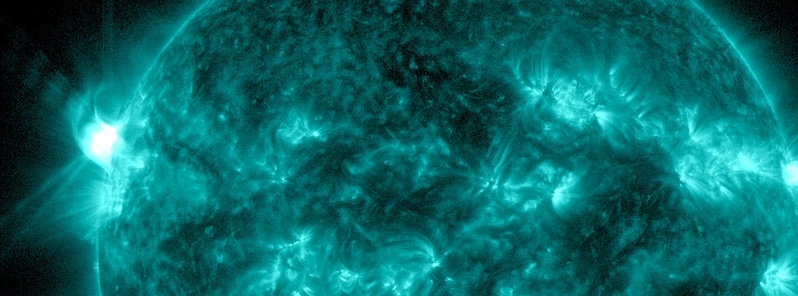
Departing Region 2322 produced two M-class solar flares by 12:00 UTC on April 21, 2015. The first one started at 07:08, peaked at 07:20 as M1.1 and ended at 07:27 UTC. Its second M-class flare of the day started at 11:49, peaked at 11:57 as M2.2 (R1 – Minor Radio Blackout) and ended at 12:02 UTC.
New active region, located just beyond the East limb, also produced M2.2 solar flare (R1 – Minor) today. This event started at 10:17, peaked at 10:40 and ended at 10:59 UTC.
R1 Radio Blackout impacts can can cause weak or minor degradation of HF radio communication on sunlit side and occasional loss of radio contact. Low-frequency navigation signals can be degraded for brief intervals.
It is still unclear if Coronal Mass Ejections (CMEs) were associated with those events.
Update:
Region 2322 produced two more M-class solar flares by 17:00 UTC today. It's third solar flare of the day started at 15:24, peaked at 15:45 as M4.0 and ended at 15:51. Fourth solar flare from this region started at 16:55, peaked at 17:00 as M2.0 and ended at 17:09 UTC.
*** end of update ***
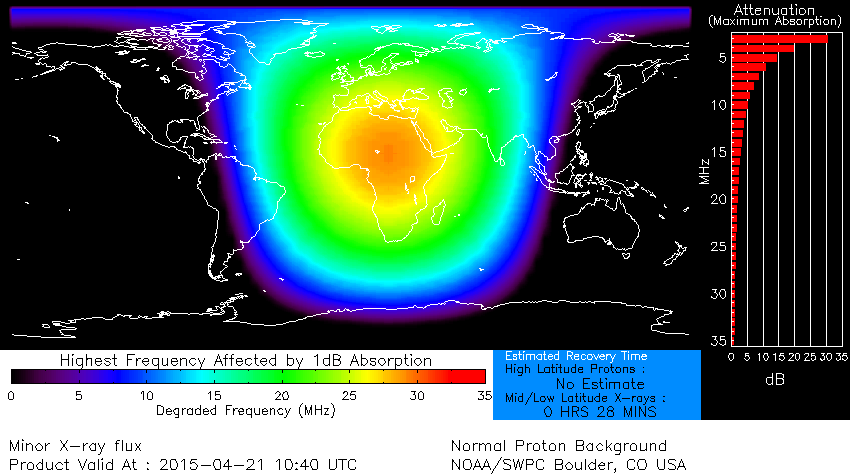
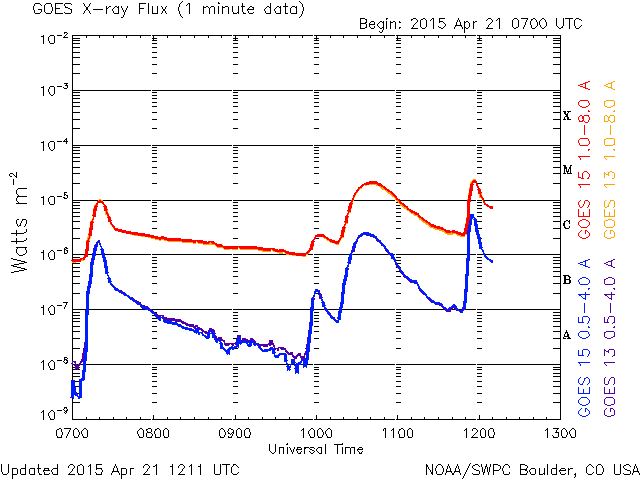
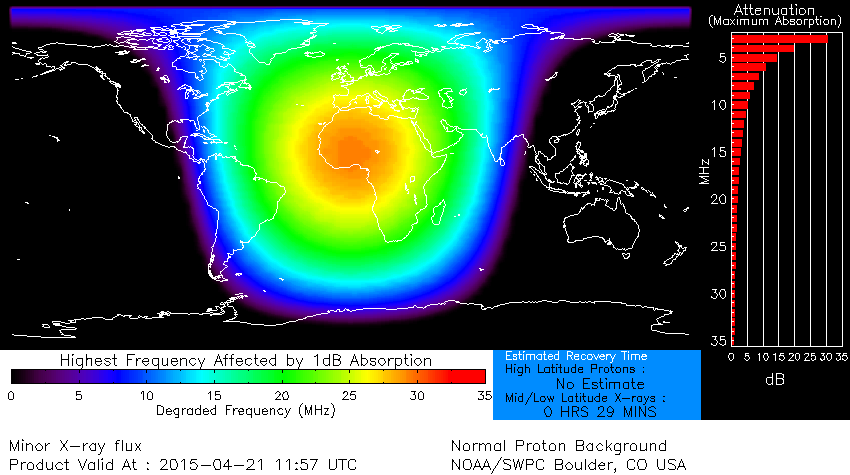
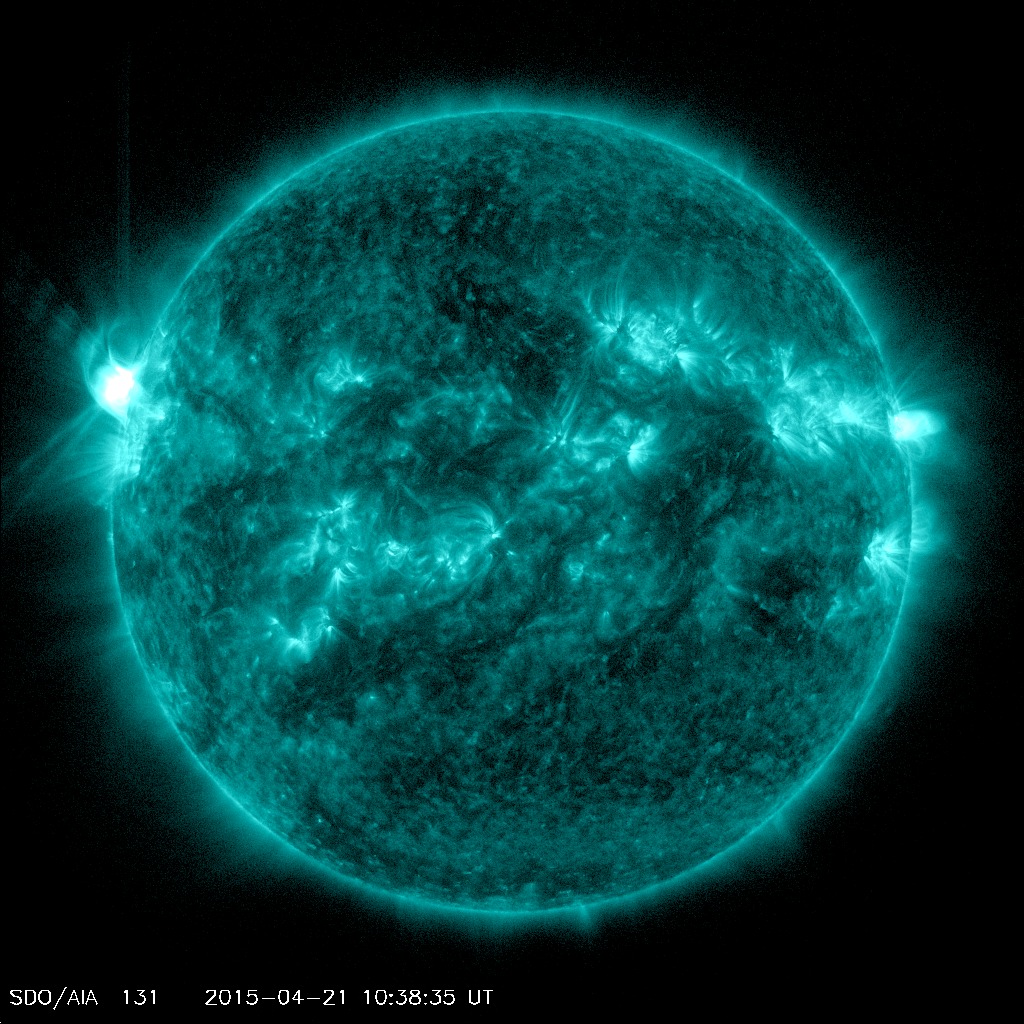
Sunspots
There are currently 10 numbered sunspot regions on the Earth side of the Sun.
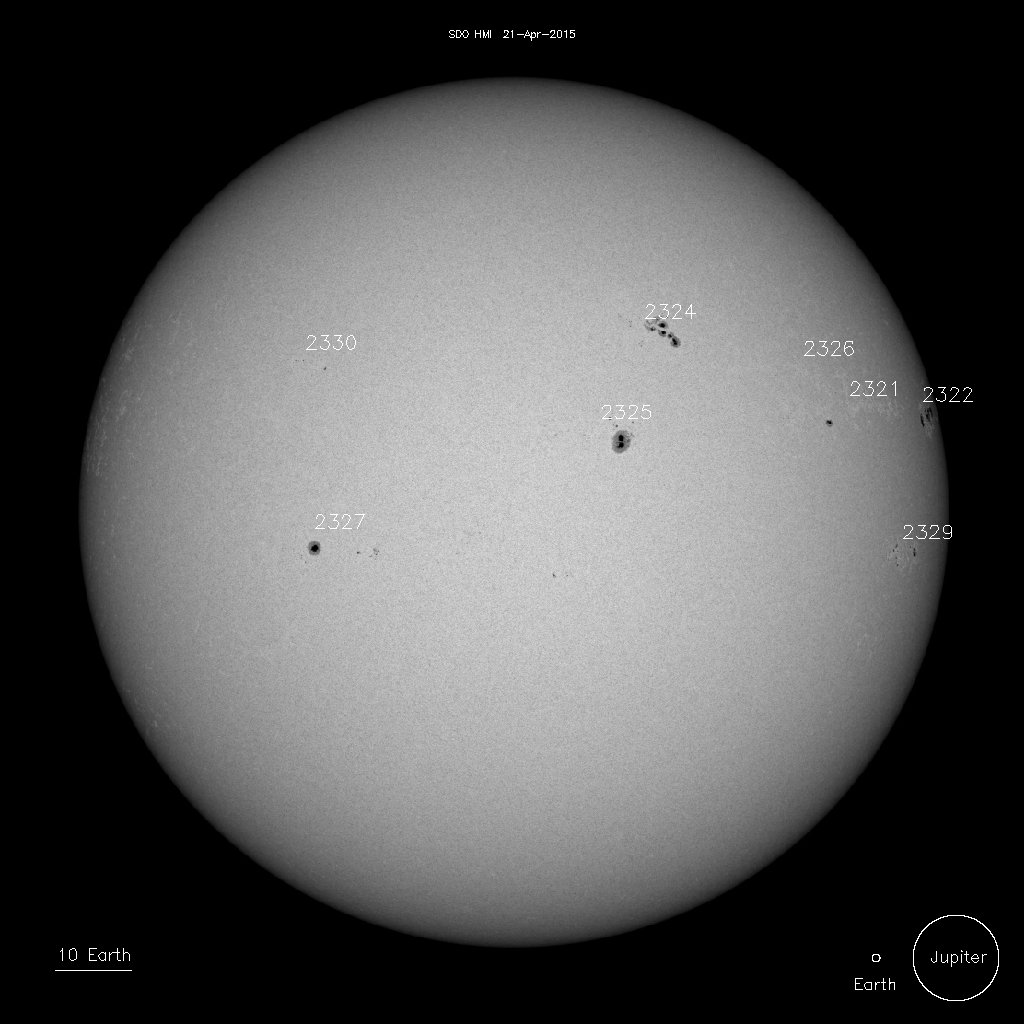
Sunspots on April 21, 2015. Image credit: NASA SDO/HMI.
2321 – Beta
2322 – Beta
2324 – Beta
2325 – Beta
2326 – Alpha
2327 – Beta
2329 – Beta
2330 – Beta
2331 – Beta (newly numbered)
2332 – Beta (newly numbered)
Forecast
Solar activity is likely to be low with a slight chance for M-class (R1-Minor) flares over the next three days (April 21 – 23) as Region 2322 rotates off the visible disk and the active region just beyond the East limb rotates on.
The greater than 2 MeV electron flux is expected to be at moderate to high levels over the next three days in response to the anticipated onset of a positive polarity coronal hole high speed stream (CH HSS). The greater than 10 MeV proton flux is expected to persist at background levels during the same period.
Solar wind parameters are expected to enhance late on April 21 due to the anticipated arrival of the April 18 CME, as well as the influence of the CH HSS. Elevated solar wind velocities and magnetic tendencies are forecast to persist through April 22. Solar wind parameters are expected to begin decreasing midday April 23 as CH HSS and CME effects begin to wane.
The geomagnetic field is expected to be at unsettled to active levels, with minor (G1-Minor) storming likely for the remainder of the UTC day. The anticipated arrival of the April 18 CME is expected to trigger periods of G1 (Minor) geomagnetic storm conditions in conjunction with the positive polarity CH HSS. April 22 is forecast to persist with G1 conditions. Unsettled to active conditions are expected to return after 09:00 UTC on April 23 as CH HSS and CME effects subside.
Featured image: NASA SDO/AIA 131 at 10:40 UTC on April 21, 2015.

Commenting rules and guidelines
We value the thoughts and opinions of our readers and welcome healthy discussions on our website. In order to maintain a respectful and positive community, we ask that all commenters follow these rules.